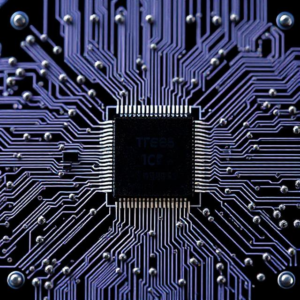An Integrated Circuit (IC), also known as a chip or microchip, is a set of electronic circuits that are fabricated onto a small piece of semiconductor material, usually silicon. The primary function of an IC is to consolidate many electronic components, like transistors, resistors, capacitors, and diodes, into a compact form. These components are then used to perform a specific function or set of functions, such as amplification, signal processing, or computation, within an electronic system.

Key Components of an IC
Integrated Circuits are made up of a combination of the following components:
Transistors:
The fundamental building blocks of modern ICs. A transistor is a semiconductor device that can act as an amplifier (boosting signals) or switch (turning circuits on and off).
Resistors:
Resistors control the flow of electrical current by offering resistance. They ensure that other components in the IC receive the right amount of current.
Capacitors:
Capacitors store and release electrical energy. In ICs, they help smooth out voltage fluctuations, filter signals, or temporarily store charge.
Diodes:
Diodes allow current to flow in one direction only. They prevent reverse current flow and protect components from damage.
Inductors:
While not as common in ICs, inductors are used in certain circuits (such as RF circuits) to store energy in a magnetic field.
These components are fabricated on a single piece of semiconductor material, usually silicon, which has been specially treated to control its electrical properties.
How It Works:
Imagine you’re using a smartphone. Inside it, many ICs control different functions, like processing information (like a CPU), connecting to the internet (like a Wi-Fi chip), or managing power (like a battery management IC). Each of these ICs is specialized for its task, and together they make the phone work smoothly.
Why are ICs Important?
Space-saving: Without ICs, electronic devices would be much larger and bulkier, because they would need a lot of individual components. ICs pack everything into a tiny chip, which makes devices more compact.
Efficiency: ICs help make electronics work faster and more reliably by allowing all components to communicate easily and efficiently.
Cost-effective: It’s cheaper to manufacture ICs than to build circuits from individual components. The mass production of ICs has made electronics more affordable and widespread.
Everyday Examples:
Your smartphone: It has many ICs like the processor, memory, and wireless chips.
Television: The ICs in your TV manage video signals, sound, and network connections.
Computers: The heart of your computer is the CPU (Central Processing Unit), which is an IC that processes all the data and instructions your computer uses.
Tags: Amplifier, capacitors, chip, compact electronics, computer processor, cost-effective, CPU, current control, Diodes, Efficiency, electronic circuits, electronic device components, energy storage, inductors, Integrated Circuit, Integrated Circuit (IC), integrated electronics., mass production, microchip, power management, Resistors, semiconductor, semiconductor fabrication, Signal filtering, Signal Processing, silicon, smartphone components, space-saving, switch, transistors, TV circuits, voltage smoothing


